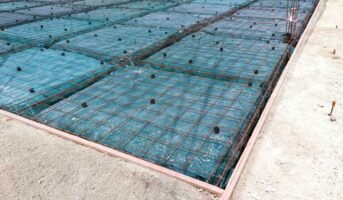The significance of water for all living beings and the ecosystem is known to everyone. The surface of the earth contains 71% water. But what per cent of that is drinkable? A mere 1%. Clean water is a necessity for drinking and irrigation. The scarcity of fresh drinking water is a severe issue in many countries around the globe. In a world struggling with non-biodegradable plastic waste, industrial waste, and other contaminants, it is essential to have more and more water treatment plants in action. To manage water, wastewater management helps a lot because it recycles water and saves the consumption of good water for secondary purposes.
See also: Anti-termite treatment
Water contamination
Humans often contaminate water bodies such as rivers, lakes, oceans, and groundwater. There are four main reasons for water pollution:
- Industrial waste: Heavy metals, toxic chemicals, microplastics, sand, rubber, ceramics, and petroleum products from various industries (like cement, pharmaceuticals, etc.) are thoughtlessly flushed into our water bodies. These wastes are also put in landfills, which can affect the groundwater.
- Sewage: Sewage from households with waste from the kitchen and bathroom and other domestic waste also causes significant concern. The contents of human and animal faeces are very harmful to our health.
- Agricultural waste: Inorganic fertilisers, chemical pesticides, and insecticides contain toxic elements which are hazardous, if consumed, to any form of life
- Urban runoff: Water runoff from the land surface because of heavy rain or storm contains silt, metals, clay, and all other waste. This water also flows into the water bodies, thus contaminating them.
Water pollution is harmful not just to human beings but to all kinds of life forms. The aquatic ecosystem is adversely affected due to oxygen depletion and eutrophication, disrupting the system.
Effects of pollution on drinking water
As a result of water pollution, drinking water in different places is found to have the following characteristics in varying intensities.
- unpleasant taste and odour,
- change in colour
- change in turbidity
- change in salinity
- change in pH
Water treatment plants process the water from the water bodies to make them safe for consumption by neutralising these issues and resolving the causes of this problem. Some governments, like the Maharashtra cabinet, approve the wastewater treatment plan process to recycle the wastewater.
Types of water impurities
There are different types of impurities in water based on their size. These include:
- Suspended impurities (larger than 10⁻³ mm)
- Colloidal impurities (between 10⁻³ mm to 10⁻⁶ mm)
- Dissolved impurities (smaller than 10⁻⁶ mm)
Water treatment techniques: Objective
The main objectives of the water treatment process are:
- The water treatment process aims to lower the level of impurities in water to a point where it is safe for human consumption and does not pose any health risks.
- Another objective of water treatment is to decrease the presence of unwanted elements such as colour, odour, turbidity, and hardness in the water supply.
- The primary goal of the water treatment process is to make water safe for drinking and other domestic uses.
- Water treatment also seeks to eliminate the corrosive nature of water that could damage pipes and other infrastructure.
- Lastly, water treatment makes water suitable for various industrial applications such as steam generation and drying by ensuring it meets certain quality standards.
Water treatment: Advantages
- Water treatment provides us with hygienic and safe water to consume
- Restore the quality of water that is deprived of its natural purity and nutrients
- Reusing our water resources can minimise pollution
- Polluted water is a source of many diseases. Utilising water that has been treated can stop these.
- It is economical to treat the available water rather than buy mineral water.
Water treatment plant process
You can treat sewage water using a sewage treatment plant that has three main stages namely primary treatment of water or preliminary stage, secondary treatment of water and tertiary treatment of water.
How to do water treatment process?
Filtering of drinking water has been taking place for centuries. Methods like boiling, filtering, sedimentation, and solar treatment have been used. However, these traditional techniques are not sufficient anymore. Therefore, much research has been done to arrive at effective water treatment processes to achieve the purest possible version of drinking water. Here are the basic steps involved in water treatment.
What is primary treatment of water?
Sedimentation refers to the separation of solids or sediments from the water. The flocs, which are now heavier, settle down at the bottom of the basin due to gravity.
Filtration
Now, the clear water passes through pores of different sizes that remove any other solids present in it. Sand, gravel, dust, and even germs are separated in this stage. The filter is backwashed at frequent intervals. Reverse osmosis and ultrafiltration are also additionally used to treat the water.
Additionally, activated carbons can be used. These adsorbents can remove undesirable color, odor, and taste from recycled water.
What is secondary treatment of waste water?
Removal of biodegradable organic matter (BOD) and suspended solids is what secondary treatment of wastewater.
What is tertiary treatment of waste water?
Tertiary treatment of wastewater is a combination of physical and chemical processes including disinfection and filtration. Additionally, biological nutrient removal, removal of nitrogen and phosphorous etc. are also used as part of tertiary treatment of water water.
Coagulation
Coagulants are chemicals that are added to the water so that they neutralise the negative charge of the dissolved particles. For example, some coagulants are alum and iron. Unfortunately, the water is rapidly mixed after the coagulants are added. As a result, the particles become heavy and settle out of the water.
Flocculation
The water is made to flow into a flocculation basin to aid in the coagulation process. Here, the size of the flocs is enhanced to help the settling out. In addition, a flocculant may be added to the water to aid this process. Inside the flocculation basin, slow paddle mixers help particle collision.
Disinfection
A disinfectant or several disinfectants can be added to the water to continue the water treatment plant operation. For example, chlorine or Chlorine dioxide may be used to kill bacteria or viruses that may still be present in the water. Some plants also use UV light to disinfect the water.
Additional water treatment techniques
Apart from the primary process mentioned above, there are other methods to enhance water quality.
- Ultrafiltration: Water is passed through pores of size ranging from .01 to 0.1 microns. It is highly effective in tackling bacteria and virus infection in the water.
- Microfiltration: This is a level before ultrafiltration. The pores are between 0.1 and 1 micron.
- Ozonation: Organic compounds and microorganisms can be eliminated by treating water with ozone.
- Flotation: Bubble attachment is used to separate solid particles from liquid
- Biological treatment: Microorganisms are used to break down contaminants. Autotrophs can fix carbon in the water and make fat, proteins, or carbohydrates. Heterotrophs can help by feeding on organic particles in the wastewater.
- Desalination: Desalination processes like distillation and reverse osmosis are frequently utilised, especially in coastal locations.
- Ion exchange: A resin with strong chloride and sodium ions ensures that the pollutant ions remain attached to it.
Conclusion
World Water Day is celebrated to show the world how important water saving is. The water treatment plant process is an inevitable requirement of any community today. It helps people, pets, and plants to get safe and clean water. Treated water is not essential just for hygiene but also to prevent water-borne diseases.
FAQs
What is the backwashing of a filter?
A filter is backwashed to eliminate the waste particles deposited on the filter, thus keeping it clean.
What is turbidity?
Water may contain bacteria, algae, clay, metal oxides, and other particles that give it a dirty look. This cloudy appearance is called turbidity.
What are the coagulants used in the water treatment plant process?
Alum, sodium aluminate, ferric sulfate, and ferric chloride are some of the common coagulants used in the process.
Do all water treatment plants have the same process?
No. The process of treating water may vary according to the nature of the water in question. For example, some water sources may require acid treatment and coagulation to control their alkalinity.
Which is more polluted- surface water or groundwater?
Surface water, like water from lakes and rivers, is likely to have more sediments, germs, and toxins than groundwater. Therefore, surface water usually needs more stringent filtration than groundwater.
Housing News Desk is the news desk of leading online real estate portal, Housing.com. Housing News Desk focuses on a variety of topics such as real estate laws, taxes, current news, property trends, home loans, rentals, décor, green homes, home improvement, etc. The main objective of the news desk, is to cover the real estate sector from the perspective of providing information that is useful to the end-user.
Facebook: https://www.facebook.com/housing.com/
Twitter: https://twitter.com/Housing
Email: [email protected]











